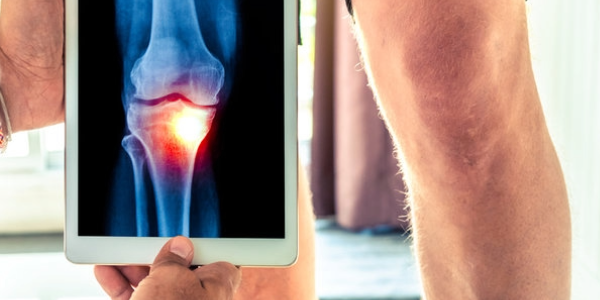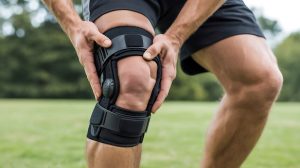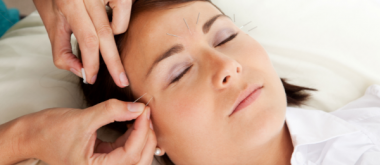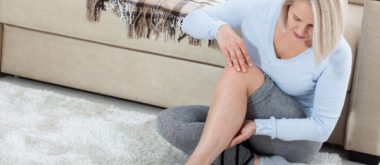Knee braces, water therapy, and exercise are the most promising non-drug therapies for treating knee osteoarthritis, according to a new meta-analysis published in the open-access journal PLOS One by Yuan Luo of the First People’s Hospital of Neijiang, China.
How Bandages, Water Therapy, and Exercise Relieve Kneee Osteoarthritis
Knee osteoarthritis (KOA) is a degenerative joint disease that affects millions of older people and causes the cartilage in the knee joint to gradually break down. Symptoms include pain and stiffness in the knee joint. Crunching noises when moving, restricted movement, and instability in the knee are also possible. Anti-inflammatory drugs are usually used for treatment, but these can be associated with gastrointestinal and cardiovascular side effects.
In the new study, researchers examined the current evidence on non-drug therapies for the treatment of knee osteoarthritis. They evaluated data from 139 clinical trials involving nearly 10,000 participants to compare 12 different non-drug treatments. These included laser therapy, electrostimulation, orthotics, insoles, kinesiology tape, water therapy, exercise therapy, and ultrasound. By combining the results of all these studies in a powerful network meta-analysis, the team was able to rank the therapies according to their effectiveness.
Knee orthoses performed best in most categories, as they helped to relieve pain, improve function, and alleviate stiffness. These are medical devices that serve to stabilize, relieve, or correct the knee joint. They usually consist of a combination of plastic, metal, foam, and straps and are worn on the outside of the leg.
Depending on their intended use, they can be designed to be flexible or very stable. Hydrotherapy—exercises or treatments in warm water—was particularly effective in relieving pain, and general exercise was also effective, improving both pain and physical function. High-intensity laser therapy and shock wave therapy showed some benefits, while ultrasound consistently had the lowest effectiveness.
Extracorporeal shock wave therapy (ESWT) involves directing high-energy sound waves into the tissue, while laser therapy uses concentrated light in the low-energy range that can penetrate deep into the tissue. Both procedures aim to relieve pain, reduce inflammation, and improve mobility.
Future Therapies
The authors point out that differences in study design, small sample sizes, and variations in treatment duration among the 139 studies included may limit the accuracy of the ranking. However, they conclude that physical therapy has promising effects on KOA and offers potential treatment options without the risks of anti-inflammatory drugs. Future studies should examine the clinical effectiveness of combined therapies as well as their cost-effectiveness. The authors add: “Knee braces, hydrotherapy, and exercise are the most effective non-drug therapies for knee osteoarthritis. They relieve pain and improve mobility without the gastrointestinal or cardiovascular risks associated with common pain medications. Patients and physicians should prioritize these evidence-based options.”






